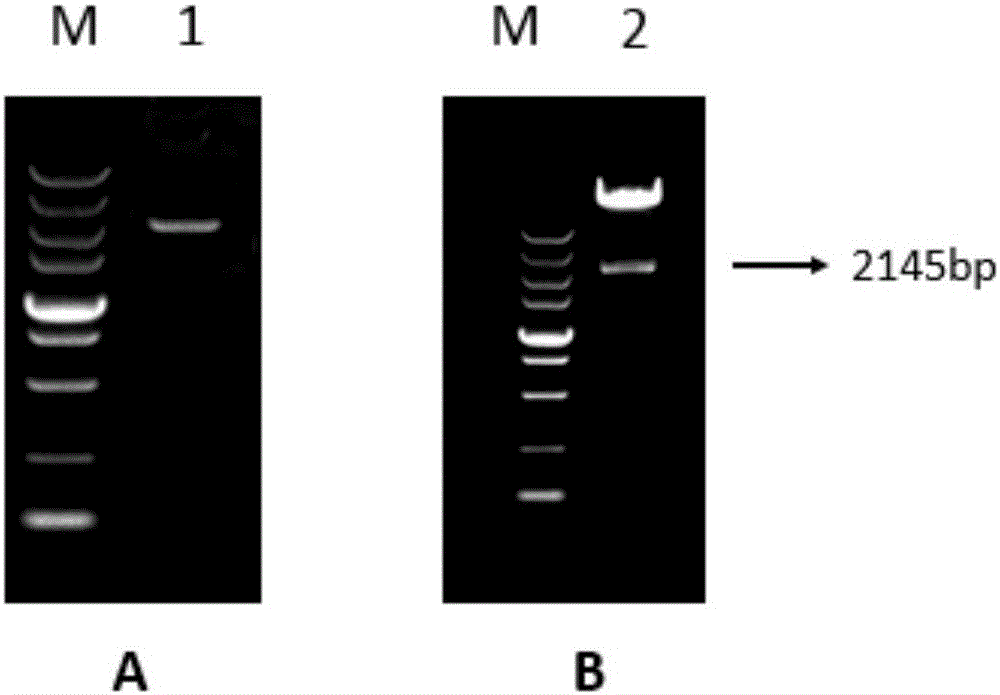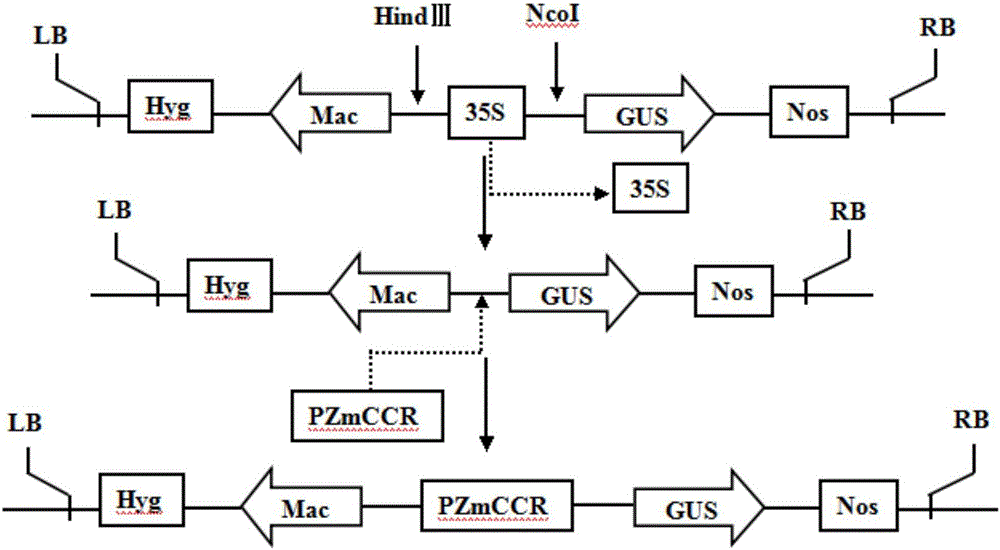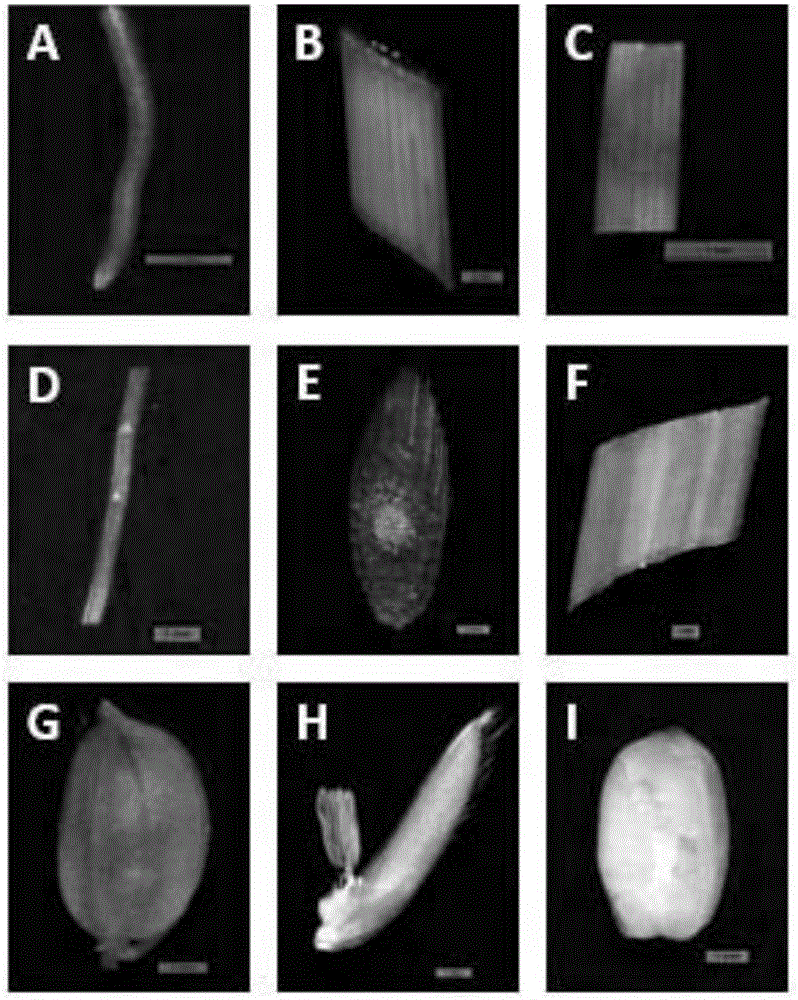Corn nutritive organ specificity promoter and application thereof
A vegetative organ and promoter technology, applied in the field of plant genetic engineering, can solve the problem of non-expression of reproductive organs, and achieve the effect of strong stage, high sensitivity and good commercial value
- Summary
- Abstract
- Description
- Claims
- Application Information
AI Technical Summary
Problems solved by technology
Method used
Image
Examples
preparation example Construction
[0031] A method for preparing a transgenic plant containing the maize vegetative organ-specific expression promoter of the present invention comprises the following steps:
[0032] (a) introducing the promoter according to claim 1 or the plant expression vector according to claim 3 into rice tissue cells;
[0033] (b) cultivating the rice tissue cells under conditions that promote plant growth to obtain transgenic plants.
[0034] A total of 18 transgenic plants were obtained by Agrobacterium-mediated transformation of rice, and 10 positive plants were detected by PCR. GUS histochemical staining was performed on different tissue parts of the positive plants. GUS histochemical staining confirmed that the PZmCCR promoter was a vegetative organ-specific expression promoter, and pCAM-PZmCCR was a vegetative organ-specific expression vector.
[0035] figure 1 PZmCCR promoter molecular detection results. A is the result of PCR; B is the result of double enzyme digestion.
[003...
Embodiment 1
[0042] Cloning of Maize Vegetative Organ Specific Promoter PZmCCR
[0043] According to the full-length sequence of the PZmCCR promoter published on the NCBI website, primers for PCR amplification of this fragment were designed, the upstream primer was added with the AAGCTT restriction site of HindIII, and the downstream primer was added with the CCATGG restriction site of NcoI.
[0044] The primer sequences are as follows:
[0045] Primer 1 (upstream primer): 5'- CCCAAGCTT CAGGCTGTGGGACACCTCCATTCTA-3'
[0046] Primer 2 (downstream primer): 5'- CATGCCATGG GTGCTCCTCTGCTCTAGCTCTT-3'
[0047] Using the corn B73 genomic DNA extracted from Quanshijin Company’s plant genome kit as a template, PCR amplification was performed with primers 1 and 2. The PCR reaction system is shown in Table 1:
[0048] Table 1
[0049]
[0050] The PCR reaction conditions were: pre-denaturation: 94°C for 5min; denaturation: 94°C for 30s; annealing: 62°C for 30s; extension: 72°C for 2min, 27 cycl...
Embodiment 2
[0053] Establishment of pZmCCR gene promoter expression vector
[0054] The small fragment PZmCCR fragment that has been connected to pEASYT1CloningVector and the large fragment CaMV35S promoter on the Agrobacterium binary vector pCAMBIA1301 were double-enzymatically digested with HindⅢ and NcoI enzymes, and 20uL of the system was digested in a water bath at 37°C for 3h As shown in table 2:
[0055] Table 2
[0056]
[0057] Ligate the above size fragments with T4 DNA ligase, and ligate at 25°C for 2-12 hours. The ligation system is shown in Table 3:
[0058] table 3
[0059]
[0060] Take 4-6 μL of the constructed vector pCAM-PZmCCR plasmid and gently inject it into 200 μL LEHA105 Agrobacterium competent cells, ice bath for 5 min, liquid nitrogen quick freezing for 1 min, and 37 °C water bath for 5 min, add 200 μL YEP liquid medium, 28 °C, Pre-express at 220rpm for 4-5h; centrifuge at 10000rpm for 30s, discard the supernatant, add 100μL YEP liquid medium, resuspend t...
PUM
 Login to View More
Login to View More Abstract
Description
Claims
Application Information
 Login to View More
Login to View More - R&D
- Intellectual Property
- Life Sciences
- Materials
- Tech Scout
- Unparalleled Data Quality
- Higher Quality Content
- 60% Fewer Hallucinations
Browse by: Latest US Patents, China's latest patents, Technical Efficacy Thesaurus, Application Domain, Technology Topic, Popular Technical Reports.
© 2025 PatSnap. All rights reserved.Legal|Privacy policy|Modern Slavery Act Transparency Statement|Sitemap|About US| Contact US: help@patsnap.com



